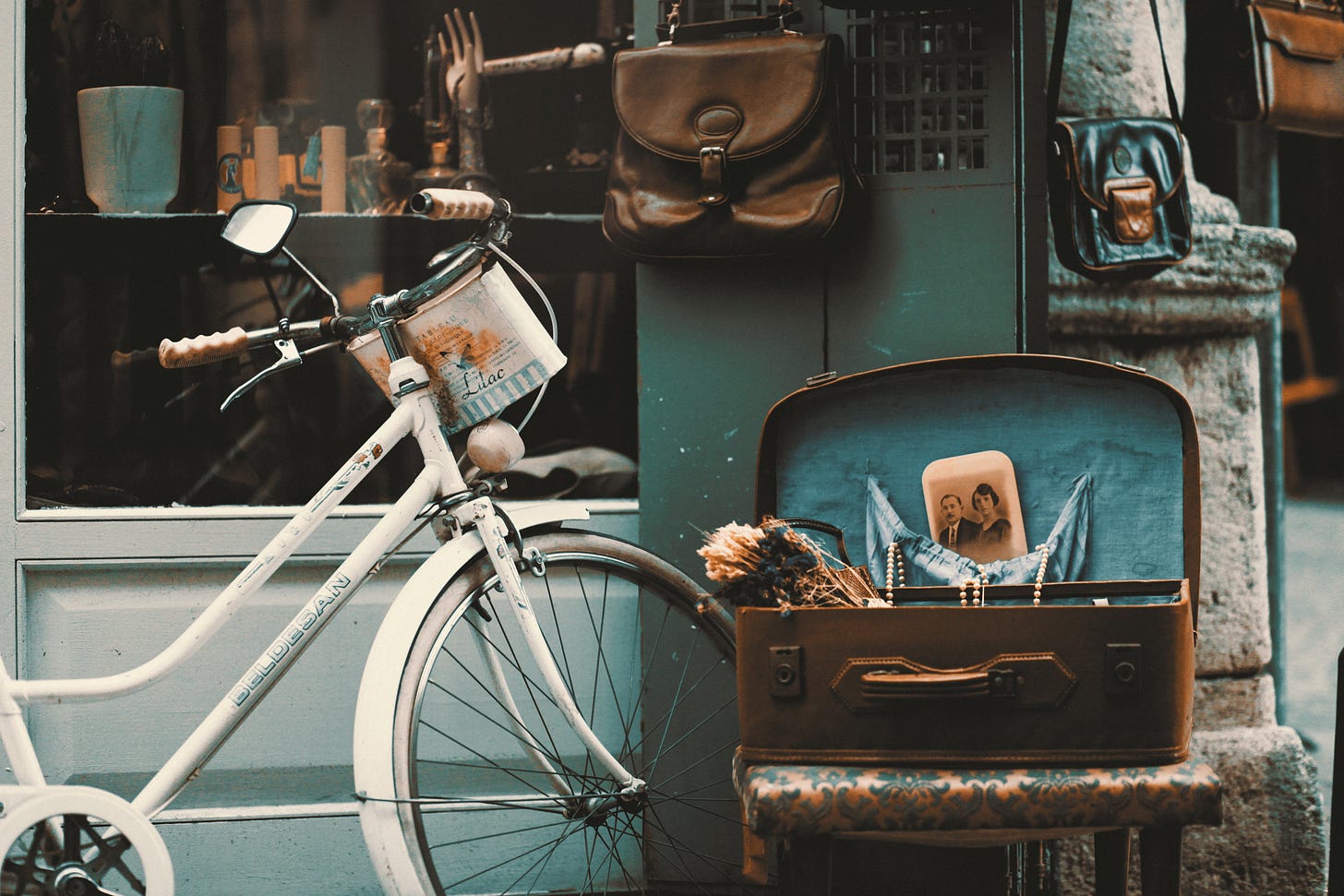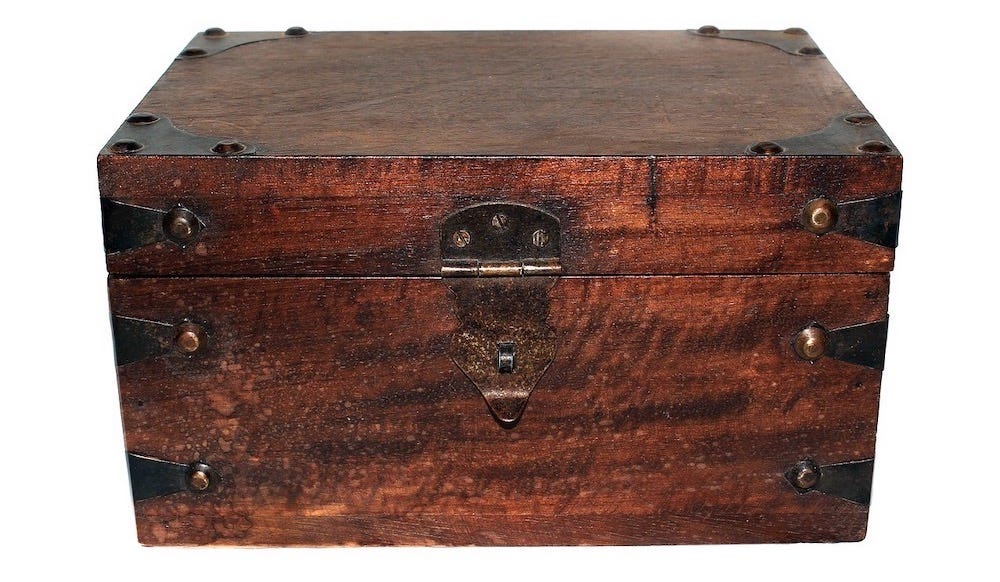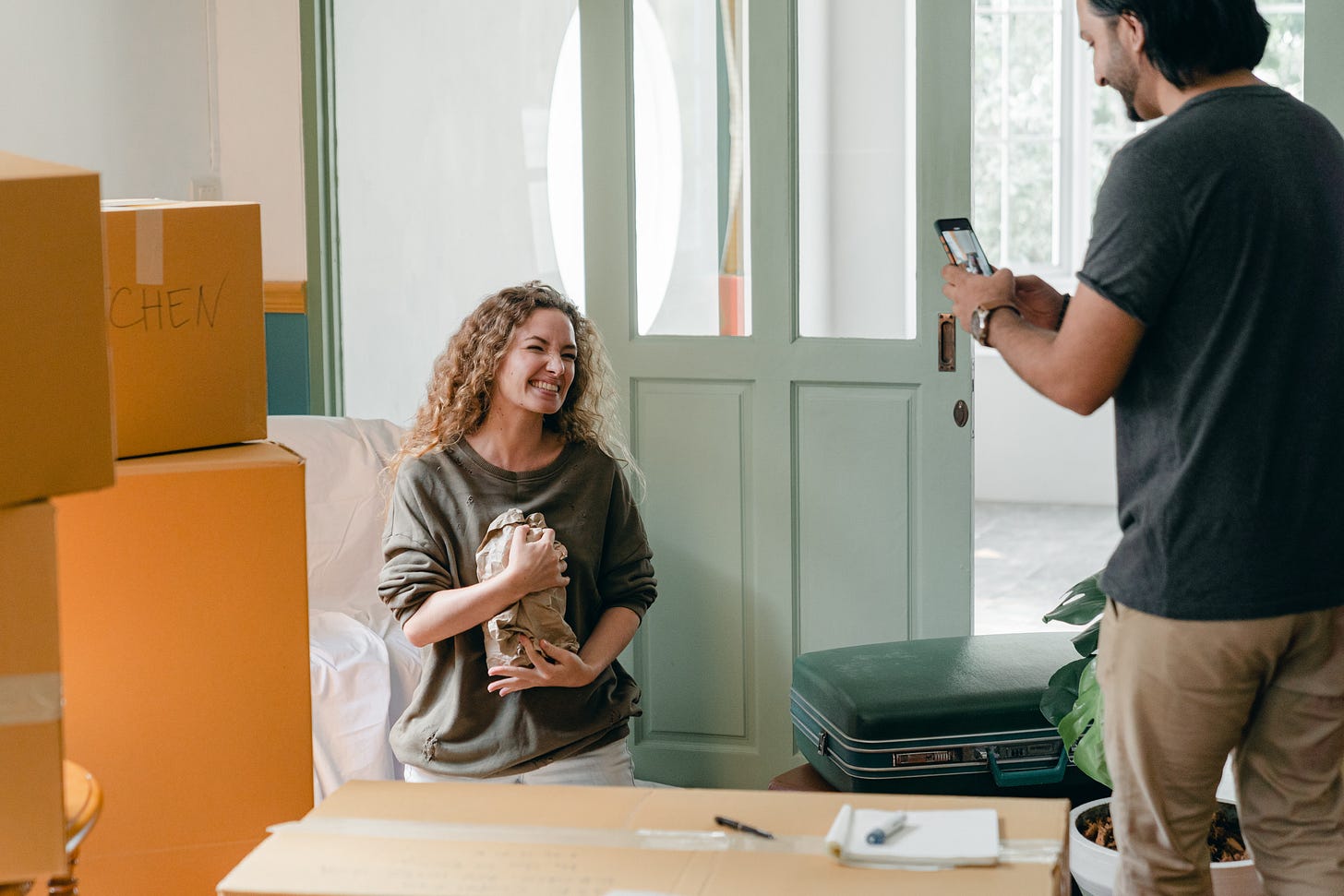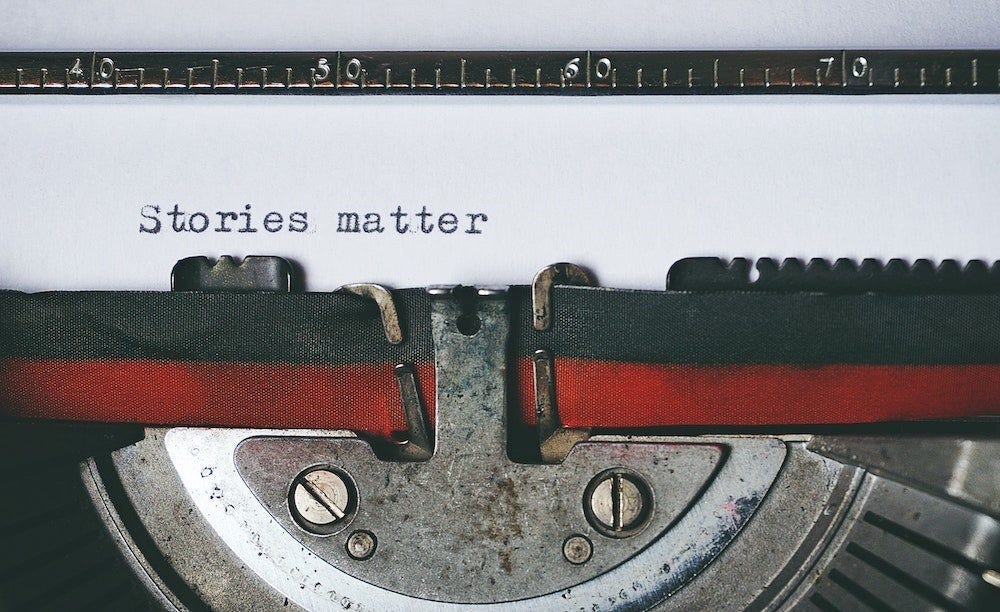We all understand the principles of minimalism. Be mindful of what you bring into your life. Simplify, reduce clutter, and focus on what truly matters.
But when the items are multi-generational, loaded with nostalgia and emotion, they still truly matter and can be challenging to part with.
I have just spent the weekend at my Dad's, a home filled with treasures going back to our post-depression family, the first generation who could afford to buy anything worth keeping. Those treasures have been lovingly funnelled through the generations.
She may no longer be with us, but our mother's energy is locked up in many of those items. Her 1950s 'glory box', her 'trousseau de mariage', or 'hope chest', sits in a spare bedroom with her ashes urn atop. They can't go anywhere.
A glass china cabinet in the living room is filled with 'valuables' rarely used but soaked with sentimentality. A large photo of Mum stands guard over her precious collection. Her bright eyes crinkled at the corners, smile down. There might be a squabble over the Royal Doulton shades-of-pastel cup, saucer and plate set, and the tiny spoons. The set hasn't seen active service since the early 1960s when she entertained friends with proper high tea and a luscious heart-shaped Victoria sponge.
The wall clock was gifted to her by the aging father she cared for in his later years. It recently stopped working after 40 years of solid service. Can't let it go.
A nest of 3 tables, de rigeur for the 1960s. Blond timber veneer top, tapered legs, neatly stacked when not in use. A birthday celebration would bring them to life. The papa bear table held a plate of cheese cubes with little sticks beside a plate of Jatz crackers, and a bowl of tiny red, green or white cocktail onions. The mama and baby bear tables were placed next to guests to rest their drinks on. An old-styled tall bottle of beer was poured into thimble-sized glasses for the ladies and beer glasses for the men. Kids ran around outside. Such joyful times live in those tables. It's still a joy to pull them apart and rest my coffee cup on the baby bear table when I visit. Can't see them go.
We're home from Dad's now, and I look around our home. Not a lot on display, but the cupboards are filled with treasures.
My daughter's wedding presents left with us over 20 years ago. She emigrated to London with a UK husband, thinking she would be back someday. I joke that I could start a catering business with her glassware for every occasion, the white platters of every shape and size, and the stacked salad bowls.
The garage hides Hubby's father's tools from the dark ages. The problem is that he is a master packer, so what he can fit into a space is three times what we mere mortals can achieve.
In early COVID, we caught the Marie Kondo bug along with millions of others. Instead of getting rid of stuff, we bought dozens of trays and baskets to fold and store the stuff ever so neatly.
Enough, Robyn. Where to from here?
As I see it, there are two types of minimalising.
Type A stuff is the 'Use it or Lose it' kind. It's the stuff we don't get around to clearing out until we move or die. Easy to do a 'Do I use it? Does it bring me joy?' Marie Kondo first pass.
Then sell or donate to someone who will appreciate it. Knowing an item is going to a good home makes it easier to let go.
I had no trouble gifting boxes of Mum's fabrics, knitting wool and needles, bottles of buttons etc. to the CWA (Country Women's Association) because I knew they would appreciate the materials and create beautiful craft pieces.
I had slightly more trouble letting bookcases of books go, but my digital library now far exceeds that analog collection. Still not sure that is a good thing but way easier to move.
But then we have two Apple iMacs sitting in the hall needing stripping and taking to Apple for recycling. It should be easy peasy, but they are still sitting there.
Then there are Type 2 treasures, abundant with emotion, memories and meaning. I need a strategy.
My sisters and I have tried to divvy up some of these items, but they have just added to the stuff at my place that I still can't part with.
Our children's generation has outgrown the attachment to stuff that we inherited from our grandparents and parents, so moving the stuff to their house isn't an option.
It's time to tackle the task head-on. Releasing things that hold strong memories is a difficult and emotional process. Here are some tips:
Focus on the present: Remember letting go of something doesn’t mean we’re letting go of the memories associated with it. We can focus on living in the present and creating new memories.
Acknowledge the emotions: It's okay to feel sad or nostalgic as we're letting go of something with sentimental value. We can recognize and accept feelings and allow time to process them.
Create a memory box: If we're not ready to let go of tiny sentimental items, this is the place for them for now. We can revisit our memory box when we're feeling nostalgic.
I open mine up and take out the doll that was given to me when I was a flower girl for a cousin's wedding at four years of age. She's missing her arms, but the fabric of her dress reminds me of wearing the most beautiful dress of my childhood. One of the few times growing up, I felt truly beautiful.
An 8th birthday card, among all the cards I have received over 67 years, is the only one which made it to my box. On the front is an 8-year-old ballerina in a pink tutu still covered in glitter. Inside is the perfect handwriting of Mum's friend. I can't even remember the present, but the card still stirs me. I felt so special.
The 'Lifesaver' sweet with the hole in the middle and a blue ribbon attached from my high school form teacher who gave one to all of us in case we needed a lifeline in the future. We laughed about it with her at our 50th class reunion last year.
Take photos: If we're struggling to let go of an item, we might take a photo of it. This way, we can still have the memory without actually holding onto the physical object.
Write stories: I plan to add stories to the photos to fully release the memory and emotion from the item for safekeeping with me.
I tell myself that letting go is a process and it's okay to take as much time as I need. I can be gentle with myself.
I like to imagine treasured household items ending up in a vintage wares store. A 1950s or 1960s-obsessed person, maybe renovating their mid-century home, will fall in love with them, take them home and love them as we have.
I'll hang onto the special memories deep in my heart.
Hopefully, our children will thank us when the time comes that we have done this work.








I love the idea of embracing minimalism. The last two times I've moved I've done major purges of stuff. It's hard, but once you go through with it, you feel freed from all of these things you didn't think you could let go of.
Also, the idea of taking a photo of an item before you let go of it is a great one! You're still keeping the essence of the object in your life without it taking up space.